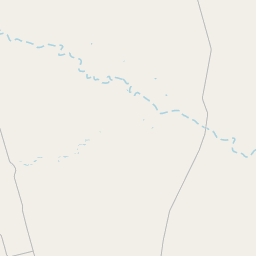Mineola Public Library
Historical marker location:






MINEOLA PUBLIC LIBRARY (LATER MINEOLA MEMORIAL LIBRARY) WAS ESTABLISHED LARGELY THROUGH THE EFFORTS OF VIVIAN WILLIAMS LOTT. SHE BECAME INTERESTED IN OPENING A PUBLIC LIBRARY AFTER SEEING ONE WHILE WORKING AS A TEACHER IN SAN BENITO (CAMERON CO.) IN 1913. A 1940 EFFORT STALLED, BUT IN NOVEMBER 1949, THE MINEOLA SCHOOL DISTRICT OFFERED AN UNUSED ROOM IN THE MINEOLA JUNIOR HIGH SCHOOL FOR USE AS A LIBRARY. A GROUP OF LOCAL CITIZENS MET IN LOTT’S HOME TO BEGIN ORGANIZING THE INSTITUTION, AND DURING A 1950 PUBLIC MEETING, MINEOLA PUBLIC LIBRARY WAS ESTABLISHED. IT OPENED IN THE SCHOOL ON MAY 22, 1950, WITH AROUND 600 BOOKS CATALOGUED.
IN 1955, THE LIBRARY MOVED TO THE RENEAU BUILDING ON SOUTH JOHNSON STREET AND THEN TO AN EMPTY STORE BUILDING ON NORTH JOHNSON STREET IN 1957. HOWEVER, THE LIBRARY WOULD HAVE TO MOVE AGAIN BECAUSE OF SPACE LIMITATIONS. THE JUDGE FAMILY WAS INSTRUMENTAL IN THE FUNDRAISING CAMPAIGN FOR A NEW BUILDING, INCLUDING THEIR HELP IN CONVINCING COMMUNITY LEADER HARRY MEREDITH TO DONATE $50,000 FOR THE PROJECT. HE SET UP THE MEREDITH FOUNDATION TO HANDLE THE FINANCIAL GIFT, AND CONSTRUCTION BEGAN ON THIS LOCATION IN 1959. THE NEW BUILDING OPENED THE NEXT YEAR. THE FACILITY AND LIBRARY FEATURES HAVE EXPANDED OVER THE YEARS. IN ADDITION TO LENDING BOOKS, THE LIBRARY HAS ALSO ORGANIZED COMMUNITY EVENTS AND OFFERED A STORY READING PROGRAM FOR YOUNG CHILDREN.
IN 1979, MINEOLA CITY REPRESENTATIVES DECIDED TO DISCONTINUE FINANCIAL SUPPORT OF THE LIBRARY. THE INSTITUTION THEN CHANGED NAMES, BECOMING A LOCALLY-FUNDED LIBRARY WHEN THE MEREDITH FOUNDATION AGREED TO BECOME ITS BENEFACTOR. TODAY, MINEOLA MEMORIAL LIBRARY CONTINUES TO ENCOURAGE LITERACY FOR RESIDENTS OF ALL AGES IN THE COMMUNITY
As one of the most visible programs of the Texas Historical Commission (THC), historical markers commemorate diverse topics in Texas history, including: the history and architecture of houses, commercial and public buildings, religious congregations, and military sites; events that changed the course of local and state history; and individuals who have made lasting contributions to the state, community organizations, and businesses.
Texas has been a major oil-producing state for over a century. The first big oil discovery in Texas was the Spindletop field near Beaumont in 1901, which set off a massive oil boom that transformed the state's economy and made Texas one of the wealthiest states in the country.
In the early 1800s, the region attracted settlers from the United States who were drawn to the lush forests and abundant resources. The first permanent European-American settlement was established in 1846, and it was named Quitman after John A. Quitman, a prominent politician of that time.
During the Civil War, Wood County played a significant role in supporting the Confederacy. Many residents enlisted in the Confederate Army, and the area became a center for military recruitment and training. After the war, the county suffered economically, but with the introduction of the railroad in the late 19th century, the economy began to recover.
Wood County's economy primarily relied on agriculture, with the growth of cotton, corn, and timber industries. The establishment of sawmills and the development of the timber industry brought prosperity to the area. In the early 20th century, the discovery of oil and gas reserves further fueled the county's economic development.
Today, Wood County continues to be an important agricultural and industrial center in Texas. The county's history is evident in its charming small towns, historic sites, and natural beauty. The strong sense of community and appreciation for the region's heritage are still evident today, making Wood County a vibrant and inviting place to visit or live.
Wood County Timeline
This timeline provides a concise overview of the key events in the history of Wood County, Texas.
- 1850: Wood County is established by the Texas legislature.
- 1852: The first courthouse in Wood County is built in Quitman.
- 1860: The population of Wood County reaches 4,867.
- 1875: The railroad reaches Wood County, boosting economic growth.
- 1895: The county seat is moved from Quitman to Mineola.
- 1920: The population of Wood County peaks at 19,109.
- 1930: The Great Depression hits Wood County, causing economic hardship.
- 1958: Lake Holbrook is completed, providing a recreational area for residents.
- 1970: Wood County's population decreases to 12,230.
- 1983: Holly Lake Ranch, a gated residential community, is established in Wood County.
- 2000: The population of Wood County surpasses 37,000.
- 2019: Wood County experiences steady growth and continues to be a thriving community.